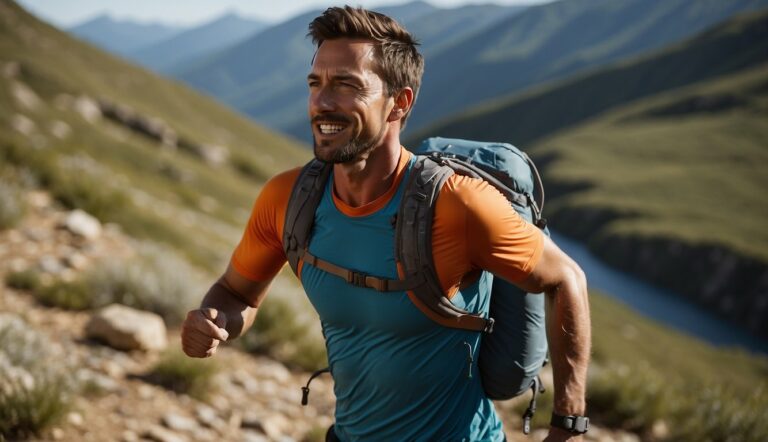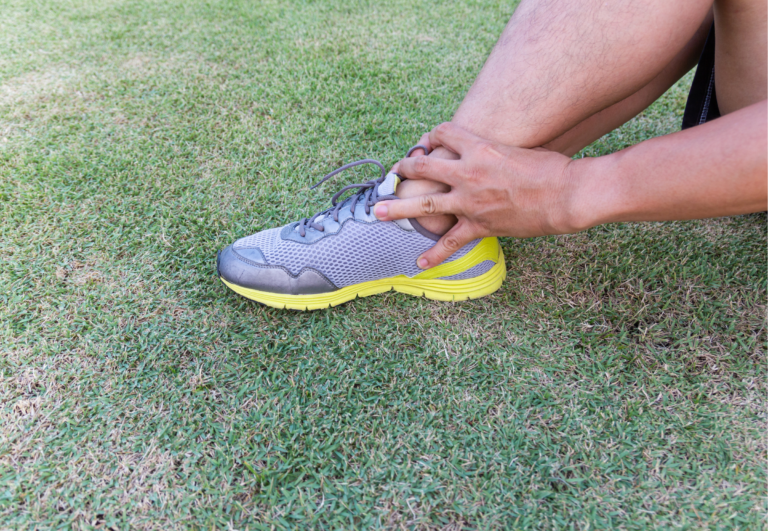How Long Do Trail Running Shoes Last? Understanding Their Lifespan and Factors Affecting Durability
As a UESCA certified running coach, I’ve seen firsthand how the lifespan of trail running shoes can significantly impact an athlete’s performance and comfort. The durability of these shoes is not indefinite; they are built to withstand rough terrain, but they will eventually wear out. Trail running shoes typically last 300 to 500 miles. However, this range can vary based on the runner’s weight, running style, and the ruggedness of the trails they frequent. Regularly assessing the midsole and tread for wear is crucial for maintaining support and traction on unpredictable surfaces.
Many runners may wonder if there’s a specific timeline for when to replace their shoes, but it’s not just about time; it’s about mileage and how the shoes respond to the stress of the trail. For example, a shoe’s cushioning often deteriorates before the outsole shows substantial wear, which can lead to discomfort or injury. It’s essential to monitor how your shoes feel during a run as it can be an indicator that it’s time for a new pair.
It’s important to remember that no two runners or trails are alike. Factors to consider include cushioning breakdown, material fatigue, and overall structural integrity of the shoe. By remaining vigilant and responsive to these indicators, runners can ensure they are always performing with optimal support and protection for their feet.
How Long Do Trail Running Shoes Last?
Trail running shoes typically last between 300 to 500 miles, but this can vary based on several factors such as the runner’s weight, running style, the ruggedness of the trails, and the quality of the shoe.
Trail shoes are designed to withstand rough terrain, which can include rocks, roots, and mud, and they are generally more durable than road shoes. However, the challenging conditions of trails can also lead to quicker wear and tear.
Here are the signs to look out for which indicate it’s time to replace your trail running shoes:
- Worn Out Treads: The lugs on the bottom of trail shoes improve grip and stability. Once these are worn down, the shoes will be less effective on trails.
- Midsole Compression: The midsole provides cushioning and absorbs shock. Over time, it can become compressed and lose its effectiveness, which can lead to discomfort or injury.
- Upper Damage: The upper part of the shoe can get torn or damaged from trail debris, compromising protection and support.
- Uneven Wear: If the shoes wear down unevenly, this can affect your gait and potentially cause injury.
- Comfort and Performance: If the shoes no longer feel comfortable or seem to perform worse, it’s likely time for a new pair.
To maximize the lifespan of your trail running shoes, it’s recommended to use them exclusively for their intended purpose and to clean and maintain them properly after each run. It’s also beneficial to rotate between two or more pairs of running shoes to allow them to decompress and dry out between runs.
Assessing Trail Shoe Lifespan
When I assess the lifespan of trail running shoes, I prioritize durability and mileage expectancy. These are critical considerations that can help runners determine when it’s time to replace their shoes.

Factors Influencing Durability
- Terrain: Rougher trails with rocks, roots, and unpredictable terrain increase wear and tear.
- Running Style: Aggressive runners may notice faster breakdown in cushioning and overall shoe structure.
- Maintenance: Regular cleaning and allowing shoes to dry affect longevity.
- Quality of Shoe: Higher quality materials tend to last longer.
- Smooth Trail: Moderate wear
- Rocky/Tech Trail: High wear
- Mud/Water: High wear, potential for materials to break down faster
Maintenance Tips:
- Clean mud off after runs
- Dry shoes in open air
Average Mileage Expectancy
The average mileage I expect from trail running shoes is 300 to 500 miles, though this is greatly influenced by the factors mentioned above.
Expected Mileage by Factor:
| Factor | Low End Mileage (miles) | High End Mileage (miles) |
|---|---|---|
| Smooth Trail | 400 | 500 |
| Rocky/Tech Trail | 300 | 400 |
| Aggressive Running Style | 300 | 450 |
| Regular Maintenance | 350 | 500 |
Based on my experience, once you’ve covered enough miles to notice a significant decrease in cushioning or if there are visible signs of wear and tear, it’s time to consider replacing your trail running shoes.
Key Components and Their Wear
Trail running shoes are composed of the outsole, midsole, and upper, each with its crucial role in performance and durability. The longevity of each component is vital for maintaining the shoe’s overall integrity and effectiveness on the trails.
Outsole Tread Wear
I inspect the outsole for signs of significant wear, focusing on the lugs’ depth and sharpness. The outsole’s rubber material provides traction, essential for stability on variable surfaces. Worn out treads reduce grip, increasing the risk of slipping.
- Visual Inspection: Check if the lugs are visibly smoothed
- Depth Gauge: Measure if the depth is significantly reduced from the original design
Midsole Break Down
The midsole, typically made of foam, is responsible for cushioning and shock absorption. I assess the midsole’s firmness and shape retention to determine its condition. Compression lines or noticeable sidewall creasing often signal a compromised midsole.
- Firmness Test: Gently press down on the midsole to gauge its responsiveness
- Shape Test: Observe if the midsole quickly regains its shape after being compressed
Upper Material Integrity
Finally, I examine the shoe’s upper, which should maintain its shape and protect the foot. The upper material, when worn out, can lead to a loss of support and increased risk for injury.
- Visual Check: Look for tears or excessive stretching in the material
- Flex Test: Gently bend the shoe to ensure the upper flexes without signs of damage
Maintenance for Longevity
Maintaining your trail running shoes is crucial to both their performance and lifespan. Proper care ensures they continue to provide support and protection on challenging terrains.
Proper Cleaning and Storage
Cleaning:
After each run, I make sure to remove mud, dirt, and debris from my shoes. This can be done using a soft brush or cloth. For a deeper clean, a mild soap and water solution works well, but avoid harsh detergents that can degrade the materials. I also recommend removing the insoles and laces and cleaning them separately to ensure thoroughness.
Storage:
To maintain the shape and structure, store your trail running shoes in a cool, dry place away from direct sunlight. Heat and moisture can break down the materials, shortening the life of your shoes. I use a shoe rack or a dedicated space in my closet for storage, ensuring they are not crushed or bent.
- Cleaning Chart:
- Post-Run: Remove dirt with brush
- Weekly: Mild soap + water solution
- Monthly: Deep clean insoles and laces
Rotation and Alternate Use
Rotation:
Investing in multiple pairs of trail running shoes and rotating them can significantly extend each pair’s shelf life. By alternating shoes, you allow them to decompress and dry out completely between runs, which is essential for the midsole’s longevity.
Alternate Use:
Limiting your trail running shoes to their specific purpose—trail running—can prevent premature wear. Using them for daily activities or on abrasive surfaces like asphalt can wear down the tread and cushioning more quickly. I keep a separate pair of shoes for errands and cross-training to ensure my trail shoes last for their intended mileage.
- Rotation Schedule:
- Pair A: Monday, Wednesday, Friday
- Pair B: Tuesday, Thursday, Saturday
- Rest Day: Allow shoes to air out
Recognizing When to Replace
As a UESCA certified running coach, I consider consistent monitoring of your trail running shoes essential to prevent injuries and maintain optimal performance. Knowing the right time to replace them will keep you running comfortably and efficiently.
Signs of Overuse and Damage
Visual Inspection:
- Examine the outsole for areas that are smoothed and no longer have a visible tread pattern.
- Check the midsole for creases, which are indicative of compromised cushioning.
Tactile Feel:
- Compress the midsole with your thumb; a lack of resistance suggests that the shock absorption is reduced.
Functional Cues:
- Be aware of any unusual aches or discomfort which may stem from the loss of support or cushioning in the shoes.
Impact on Performance and Comfort
Performance Metrics:
- Monitor for any decrease in running efficiency or an increase in the effort required to maintain your usual pace.
Comfort Assessment:
- Pay attention to any new pain or injuries, for they can be signs of inadequate shock absorption or stability from your shoes.
By attentively observing these signs, you can proactively replace your trail running shoes before they lead to overuse injuries or discomfort, ensuring a safe and enjoyable running experience.
The Role of Running Style and Body Factors
Understanding the interplay between running style and body weight can play a pivotal role in the longevity of your trail running shoes. The way you run and your physical characteristics impose varying levels of strain and stress, which can lead to uneven wear and affect the stability and durability of the shoes.
Effect of Gait and Technique
Each runner’s gait—a combination of stride length, foot placement, and movement pattern—exerts a unique influence on their shoes. A consistent foot strike pattern may cause concentrated wear in particular zones.
For instance, if I consistently land on the outer edge of my shoes, the lateral sole wears down faster. Improving running technique to balance foot strikes can help distribute the impact and mitigate localized strain, potentially extending the lifespan of the shoes.
- Technique Adjustments for Even Wear:
- Focus on a midfoot strike to balance impact.
- Maintain a stable, aligned posture.
- Employ a compact, efficient stride.
Influence of Runner’s Body Weight
Body weight also affects how quickly trail running shoes may wear out. Higher body weight increases the stress on shoes with each step leading to a compression of the cushioning materials and accelerated wear. For heavier runners, opting for shoes with robust cushioning and enhanced durability features can help counteract the extra stress, thereby prolonging shoe lifespan.
- Shoe Selection Considerations:
- For heavier runners: Choose shoes with substantial cushioning and reinforcement.
- For lighter runners: You may prioritize flexibility over durability without sacrificing shoe longevity.
Selecting Shoes for Trail Challenges
When choosing the right trail running shoes, it’s crucial to consider the specific demands of the terrain and how the construction of the shoe provides protection and traction. These aspects ensure a safe and responsive trail running experience.
Understanding Terrain and Shoe Traits
Selecting the optimal shoe begins with understanding the terrain. Different trails require different shoe characteristics for the best performance. Here’s a brief guide:
- Technical trails: Look for shoes with enhanced traction and durability. A Vibram outsole or similar quality grip is ideal for rocky and root-filled paths.
- Muddy and soft trails: Shoes with deep lugs (4mm or more) will provide better grip and stability.
- Mixed-terrain: Versatility is key, so seek shoes with moderate lug depth and good cushioning for both hard and soft surfaces.
- Hard-packed trails: Cushioning becomes more important to absorb impact, and a firmer outsole will suffice.
Shoe Construction and Trail Protection
The construction of trail running shoes is generally more robust than road shoes to offer protection against the harsh elements of nature.
- Upper: A mesh upper with reinforced overlays will help protect the top of the feet from debris, while still allowing the shoe to breathe.
- Toe Box: Reinforced toe boxes prevent injuries from accidental stubs against rocks and roots.
- Midsole: This is where cushioning comes into play. Look for a shoe with enough cushion to absorb impact without sacrificing ground feel.
- Outsole: A durable rubber outsole with well-designed lugs will protect the bottom of your feet and provide necessary traction.
Understanding the balance between protection and functionality is key when selecting trail running shoes to tackle nature’s challenges on uneven surfaces.






